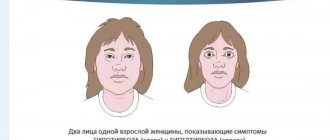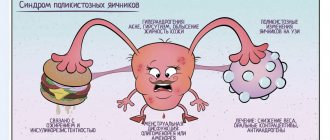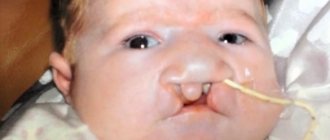Adult respiratory distress syndrome (ARDS) is an acute respiratory failure, which can be caused by acute lung injuries of various natures, and which is characterized by non-cardiogenic pulmonary edema, disturbances in external respiration and hypoxia (lack of air in the body).
- Causes
- Pathogenesis
- Pathomorphology
- Symptoms
- Diagnostics
- Treatment
The syndrome was described in 1967 by researcher Esbach. Named similarly to neonatal respiratory distress syndrome, which is caused by a surfactant deficiency that affects babies from birth. In the case of the disease in question, this deficiency is secondary, that is, it does not arise from birth. Often other names are used for this syndrome: non-cardiogenic pulmonary edema, shock lung.
According to Marini data released in 1993, there are 150,000 cases of adult respiratory distress syndrome in the United States each year. That is, there are 0.6 patients per 1000 population.
Causes
Among the most common causes of the syndrome in question are:
- sepsis
- viral, bacterial, fungal and other pneumonias
- disseminated intravascular coagulation syndrome with subacute or acute course
- anaphylactic or septic shock, pronounced and long-lasting
- Chest compression syndrome and trauma
- aspiration of vomit, water (in cases of drowning)
- pulmonary embolism (air, fat, amniotic fluid)
- inhalation of irritating and toxic substances: nitrogen oxide, chlorine, ammonia oxides, phosgene, pure oxygen
- venous fluid overload (plasma, saline or colloid solutions, etc.)
- massive blood transfusions with the development of multiple microthromboembolisms in the vascular bed of the lungs
- severe metabolic disorders (eg, uremia)
- use of a heart-lung machine
- autoimmune diseases (Goodpasture syndrome, systemic lupus erythematosus, etc.)
- acute hemorrhagic pancreatic necrosis (enzyme intoxication is important in the pathogenesis, which provokes a violation of surfactant synthesis)
- long stay at high altitudes
Risk factors
- sepsis, which is the cause of the development of RDS in 40% of cases. In severe sepsis, lung damage is one of the first manifestations;
- polytrauma;
- burns of II – III degree with damage to more than 28% of the body;
- fat embolism – blockage of blood vessels with fat emboli;
- gestosis of pregnant women;
- acute pancreatitis;
- drug overdose (methadone, heroin);
- massive blood transfusions;
- long-term use of medications - Amiodarone, Bleomycin.
A factor aggravating the course of ARDS is chronic alcoholism and drug addiction.
Pathogenesis
Etiological (causal) factors lead to the fact that activated leukocytes and platelets accumulate in large quantities in the interstitial tissue of the lungs and in the capillaries of the organ. Researchers hypothesize that they release many biologically active substances:
- prostaglavdinov
- proteinases
- leukotrienes
- toxic oxygen radicals, etc.
They damage the alveolar epithelium and vascular endothelium, change the reactivity of blood vessels, the tone of the bronchial muscles, and contribute to the development of fibrosis. The above listed biological substances affect damage to the alveolar epithelium and endothelium of the capillaries of the lungs. In a short period of time, vascular permeability increases, spasm of the pulmonary capillaries occurs, and the pressure inside them increases. Pronounced sweating of plasma and red blood cells into the alveoli and interstitial tissue of the lungs is recorded, pulmonary edema and atelectasis develop. The development of atelectasis is also influenced by a secondary decrease in surfactant activity.
The processes described above affect the main pathophysiological mechanisms :
- shunting of venous blood into the arterial bed
- alveolar hypoventilation
- impaired diffusion of oxygen and carbon dioxide
- mismatch between ventilation and perfusion
How to prevent acute respiratory distress syndrome?
Although many risk factors for the development of ARDS are known, successful preventive measures are lacking. Because aspiration pneumonitis (Mendelssohn syndrome) is a risk factor for ARDS, taking appropriate measures to prevent aspiration (eg, elevating the head of the bed and assessing swallowing mechanisms before feeding high-risk patients) may also prevent some cases of ARDS.
In patients without ARDS with mechanical ventilation, the use of higher tidal volumes appears to be a risk factor for the development of ARDS, and therefore, the use of lower tidal volumes in all patients with mechanical ventilation may prevent some cases of ARDS.
Pathomorphology
Respiratory distress syndrome in adults develops at least 2-3 hours, maximum 3 days from the onset of the influence of the cause factor. There are 3 pathomorphological phases of the syndrome in question:
- acute
- subacute
- chronic
The duration of the acute phase of adult respiratory distress syndrome ranges from 2 to 5 days. Interstitial and then alveolar pulmonary edema develops first. Red blood cells, protein and leukocytes are found in the edematous fluid. In addition to edema, severe damage to the alveolar epithelium of types I and II and damage to the pulmonary capillaries is also detected. Damage to type 2 alveolocytes causes disruption of surfactant synthesis, which is why microatelectasis develops.
If the course of respiratory distress syndrome in adults is favorable, then after a few days the acute phenomena subside and the edematous fluid resolves. But the syndrome does not always proceed favorably. In some cases, it becomes subacute and then chronic. In the subacute phase, interstitial and broncho-alveolar inflammation occurs.
The chronic phase of adult respiratory distress syndrome is characterized by the development of fibrosing alveolitis. In the alveolar-capillary basement membrane, connective tissue grows, a sharp thickening of the membrane occurs, as well as its flattening. A pronounced proliferation of fibroblasts and increased synthesis of collagen, the amount of which increases two or even three times, are typical. Severe interstitial fibrosis may be present as early as 2-3 weeks after the onset of the disease. Also, the chronic phase is characterized by changes in the vascular bed of the lungs: the development of microthrombosis, emptying of blood vessels. As a result, chronic pulmonary hypertension and chronic respiratory failure develop.
Consequences and complications
Possible complications of ARDS in adults include ventilator-associated pneumonia , asphyxia , pulmonary barotrauma , bacterial pneumonia , left ventricular heart failure , and the development of disseminated intravascular coagulation syndrome .
The consequences of SDR in newborns are determined by gestational age, severity of respiratory failure, adequacy/timeliness of resuscitation/therapeutic measures, and associated complications.
Symptoms
In the clinical picture of respiratory distress syndrome in adults, doctors distinguish four periods. The first is hidden (when the influence of the factor-cause occurs). The period lasts a day after the body comes into contact with the causative factor. Pathophysiological and pathogenetic changes occur. But no symptoms appear, and there are no changes on the x-ray. But during this period, the patient can experience tachypnea, when he takes more than 20 breaths per minute.
The second period is called the period of initial changes. It is fixed 1-2 days from the onset of the etiological factor. Symptoms begin to appear, primarily tachycardia and severe shortness of breath. Auscultatory methods determine hard vesicular breathing and scattered dry rales. X-rays reveal an increase in the vascular pattern, especially in the peripheral parts. Such changes indicate that interstitial pulmonary edema begins. A blood gas study shows no abnormalities, or a slight decrease in PaO2 may be detected.
The third period is called the developed or period of pronounced clinical manifestations. The symptoms are pronounced and indicate acute respiratory failure. The person experiences severe shortness of breath. Accessory muscles take part in the act of breathing. There is swelling of the wings of the nose, retraction of the intercostal spaces. Diffuse cyanosis is also well expressed. Auscultation of the heart reveals dullness of heart sounds and tachycardia, and blood pressure (BP) drops significantly.
In this phase, percussion research methods reveal a dull percussion sound, mainly in the posterior lower parts, auscultation reveals hard breathing, sometimes dry rales. If moist rales and crepitus are detected, this indicates the appearance of fluid in the alveoli, which is called in medicine alveolar pulmonary edema, which can be either slight or severe. X-ray of the lungs shows pronounced interstitial pulmonary edema, as well as bilateral infiltrative shadows of irregular cloud-like shape, merging with the roots of the lungs and with each other. Often, focal-like shadows appear in the marginal parts of the middle and lower lobes against the background of an enhanced vascular pattern. During this period, PaO2 decreases significantly - 50 mm Hg, even if O2 inhalation is performed.
The fourth period is called terminal. Respiratory failure progresses greatly, severe arterial hypoxemia and hypercapnia, and metabolic acidosis develop. Acute cor pulmonale is formed due to increasing pulmonary hypertension. The fourth period of respiratory distress syndrome in adults is characterized by the following symptoms:
- profuse sweating
- severe shortness of breath and cyanosis
- a sharp drop in blood pressure until collapse
- deafness of heart sounds, tachycardia, often also various arrhythmias
- moist rales in large quantities (of different sizes) in the lungs, profuse crepitus
- cough with pink, foamy sputum
At this stage, signs of increasing pulmonary hypertension and acute pulmonary heart syndrome develop. The splitting and accent of the second tone are recorded on the pulmonary artery. Among the ECG signs, it is worth noting a pronounced deviation of the electrical axis of the heart to the right, high pointed P waves in leads II, III, avF, V1-2. An x-ray reveals signs of increased pressure in the pulmonary artery and bulging of its cone.
For the fourth stage of the syndrome, the development of multiple organ failure is typical. The functioning of the kidneys is impaired , therefore the following appear:
- proteinuria
- oligoanuria
- microhematuria
- cylindruria
- increased urea levels in the blood
- increase in blood creatinine levels
Liver function is also impaired, causing slight jaundice, and the amount of fructose-1-phosphate dolase, alanine aminotransferase and lactate dehydrogenase in the blood increases greatly. The function of the brain is impaired: the patient becomes lethargic, dizziness, headaches are observed, and there may be symptoms of cerebrovascular accident. When examining the blood gas composition, hypercapnia and deep arterial hypoxemia are recorded. A study of acid-base balance is carried out, which reveals metabolic acidosis.
First stage
At first, the disease develops in a latent form. As a rule, within 24 hours after the onset of the disease, changes of a pathogenetic and pathophysiological nature occur.
During this period, there are no symptoms that would cause the patient to worry and consult a doctor. Even if he visited a specialist who prescribed an x-ray, no changes will be visible in the picture.
The only sign that should cause concern is severe shortness of breath. The person begins to take 20 breaths per minute or more. This syndrome is called tachypnea.
Diagnostics
Researchers Fisher and Foex in 1990 proposed the following criteria for diagnosing adult respiratory distress syndrome:
- greater work of breathing, increasing chest rigidity
- breathing disorder
- characteristic x-ray picture
- clinical picture (symptoms) of increasing pulmonary edema
- hypertension in the pulmonary circulation
- arterial hypoxemia (usually PaO2 less than 50 mm Hg) and hypercapnia
- Arterial blood pH below 7.3
- normal pulmonary artery wedge pressure (<15 mm Hg) (this sign helps to distinguish the disease from cardiogenic pulmonary edema, in which pulmonary artery wedge pressure increases)
The examination program for respiratory distress syndrome in adults includes the following stages:
- General blood and urine tests
- Electrocardiography
- X-ray of the lungs
- Study of acid-base balance
- Study of blood gas composition: determination of PaO2, PaCO2
Clinical examination
To diagnose ARDS, the doctor will look for a number of clinical signs that have an acute onset. The doctor will check your general appearance, listen carefully to your breasts, and check your oxygen saturation using a finger oxygen tube.
Some signs of ARDS that your doctor will look for include:
- cyanosis (bluish color localized on the tongue, lips);
- tachypnea (rapid, shallow breathing);
- cardiac tachycardia (increased heart rate);
- increased hypoxemia (low oxygen concentrations in the blood);
- peripheral vasodilation (opening of blood vessels in the periphery of your body);
- Chest wheezing: The doctor will listen to your chest with a stethoscope to hear wheezing, creaking, or crackling sounds that indicate your airspace is not working properly.
How is ARDS diagnosed?
If you suspect you have ARDS, your doctor will perform a number of different tests. Complete blood count, kidney function, liver function (liver test, LFT), blood clotting test , and blood culture are all needed. These tests can help determine if you have a predisposing infection, likely problems, and give your doctor an idea of how well your other organs are functioning.
Chest X-ray is an extremely important tool in diagnosing and monitoring disease progression. During the examination, the doctor can visualize fluid accumulation in the lungs.
You will also regularly measure the oxygen concentration in your blood, and may also have other more specialized tests, such as inserting special catheters (thin tubes) to measure specific blood pressure. This rules out other causes of fluid accumulation in the lungs, such as congestive heart failure.
Treatment
The patient must be urgently hospitalized in the intensive care unit. Oxygen therapy is important for his survival to correct the decrease in O2 levels in the blood. If the oxygen supplied through the mask does not stabilize the patient’s condition, the person must be transferred to mechanical ventilation. A tube is inserted into the trachea through the mouth or nose and oxygen is pumped under pressure, which saturates the blood. The pressure must be adjusted so that the terminal sections of the bronchi (bronchioles) and alveoli remain open and the lungs do not receive excessive amounts of oxygen. This is important because too much O2 can have a negative impact on the lungs and lead to lung damage, which can lead to acute respiratory distress syndrome.
The patient is prescribed maintenance therapy, which means intravenous administration of fluids or nutrients, because with insufficient nutrition and lack of water in the body, the functions of many vital organs are impaired. Doctors call this condition multiple organ failure, as mentioned above.
The doctor, based on the cause, determines the types of treatment in each specific case. Sometimes it is necessary to prescribe antibiotics if the causative agent is an infectious agent. With a rapid effect of treatment, lung function is restored, long-term consequences are minimal or absent. With a long stay on a ventilator, there is a risk of developing fibrosis of the lung tissue. This means that normal lung tissue changes to coarse fibrous tissue. The degree of fibrosis may decrease several months after the patient begins to breathe on his own, without the help of a ventilator.
By what signs can you recognize ARDS?
First of all, it is worth noting that the lungs of a healthy adult weigh about 380 g. If we are talking about respiratory distress syndrome, then in this case their weight increases to almost 1 kg.
When making a cut, you can notice how a liquid with pinkish foam forms at the cut site. The same components can be found in the trachea and bronchi.
Lesions affect almost all internal organs:
- Liver function is impaired. In this case, there is an increase in bilirubin and liver enzymes.
- The patient suffers from cardiovascular disorders. This manifests itself in the form of a sharply decreasing blood pressure. In this case, the development of tachycardia may occur, which will gradually turn into bradycardia. If treatment is not followed, cardiac arrest occurs and the patient dies.
- Kidney function is impaired. With renal failure, gastrointestinal bleeding may also develop.
If the patient can be saved, then this is not a reason to breathe easy. There is a high risk of developing sclerotic and diffuse inflammation. In this case, pneumonia, chronic bronchitis, emphysema, and in some cases bronchiectasis can be diagnosed simultaneously.
Due to all these ailments, the load on the heart muscles increases. Therefore, even with a temporary cure, there remains a risk that the patient will die.
Therefore, it is important to recognize the pathology in a timely manner. It develops in four stages. Let's take a closer look at them.
Preventive measures
Prevention of respiratory distress syndrome lies in the fact that, first of all, a person must promptly treat all ailments associated with the respiratory tract. If the patient had pneumonia, which he started, then this can become a favorable environment for the development of RDVS.
It is also recommended to avoid factors that can provoke this dangerous syndrome. This means staying away from toxic fumes, sources of radioactive radiation, etc. In addition, you should protect your chest. If she is injured, this can also lead to extremely unpleasant consequences.
If a person is undergoing a blood transfusion, then care must be taken to ensure that the procedure is carried out strictly according to all the rules. In addition, the patient's condition must be strictly monitored by a specialist. If something goes wrong, the procedure is stopped.
If alarming symptoms occur, you should immediately seek emergency help. If you have difficulty breathing or increasing shortness of breath, do not waste precious time.
Draft guidelines of the Russian Association of Perinatal Medicine Specialists (RASPM)
Baibarina Elena Nikolaevna, Moscow, Vereshchinsky Andrey Mironovich, Nizhnevartovsk, Gorelik Konstantin Davidovich, St. Petersburg, Grebennikov Vladimir Alekseevich, Moscow, Degtyarev Dmitry Nikolaevich, Moscow, Ivanov Sergey Lvovich, St. St. Petersburg, Ionov Oleg Vadimovich, Moscow, Lyubimenko Vyacheslav Andreevich, St. Petersburg, Mostovoy Alexey Valerievich, St. Petersburg, Mukhametshin Farid Galimovich, Yekaterinburg, Pankratov Leonid Gennadievich, St. Petersburg, Prutkin Mark Evgenievich, Ekaterinburg, Romanenko Konstantin Vladislavovich, Chelyabinsk, Fomichev Mikhail Vladimirovich, Nizhnevartovsk, Shvedov Konstantin Stanislavovich, Nizhnevartovsk
With the participation of:
Antonov Albert Grigorievich (Moscow), Babak Olga Alekseevna (Moscow), Vorontsova Yulia Nikolaevna (Moscow), Romanenko Vladislav Alexandrovich (Chelyabinsk), Rusanov Sergei Yuryevich (Ekaterinburg)








